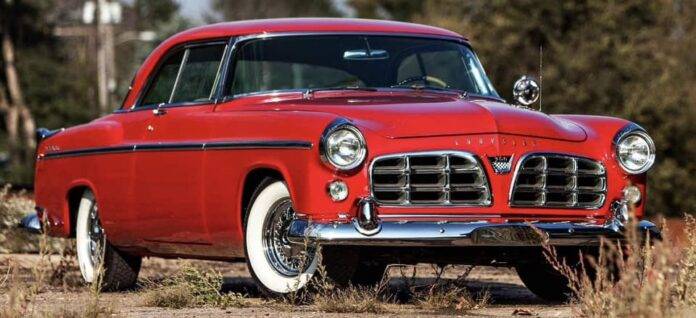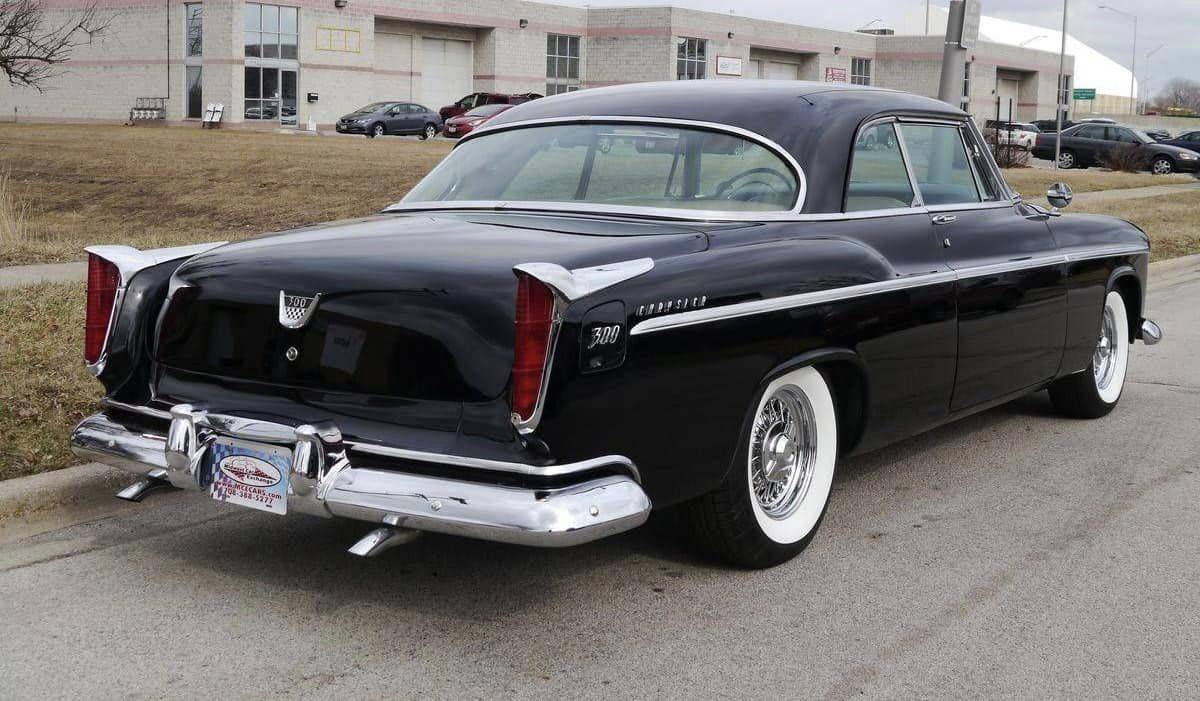The Hemi head, as it’s known, began life with the Chrysler Corporation as a 16-cylinder aircraft engine and a 12-cylinder tank engine. Both were developed for World War II, but by the time testing was completed, so too was the War. But the R&D was invaluable for Chrysler, who applied the Hemi head design to its passenger cars in 1951.
Called the FirePower V8, the engine measured a stout 331 CI and delivered 180 HP. Efficient and peppy, FirePower Chryslers were unusually quick, but came with a healthy price tag. Knowing they were onto something great, Chrysler decided it was time to compete in racing with a specially-developed, high-performance 331 Hemi.
In the 1950s, NASCAR rules dictated competition cars run showroom stock. To qualify, Chrysler installed their new performance Hemi into a new car called the C-300. The interior would be shod with leather upholstery, and the equipment roster would rival the Imperial luxury car. The modified Hemi would pack a 300 HP punch, more than any other American car. It would sticker for just over $4,000, or about $45,000 in 2023 dollars, a high enough price that only a little over 1,700 were sold. For comparison, the average annual salary in 1955 was $4,400, the average cost of a home in the USA was just about $18,000, and the average cost of a car was $3,000.
In 1955, the C-300 won a shocking 27 races, including 18 NASCAR races. The first and second C-300 built were raced at Daytona in Feb 1955, the same month the car would make its public debut. Vicki Wood piloted car 1001 and car 1002 was driven by Warren Koechling, Wood running a two-way average of 125.838 MPH and Koechling running 127.580 MPH. The C-300 didn’t break any records that day, but Wood and Chrysler did break some gender barriers. And, the C-300 was fast enough that it put the motoring world on notice.
The C-300 would go on to set numerous speed and endurance records, elevating the mysterious car to legendary status. The Chrysler C-300 was popular enough that Chrysler returned for 1956 with the 300B, thus beginning the Letter Series era. The 300B would have a one-year-only 354 CI V8 engine, which delivered 340 HP or 355 HP, depending on the compression ratio. They also continued to sweep win after win, and buyers were in awe over the big, luxurious car that could perform just about as well as smaller cars. While they never sold well, they drew attention to the Chrysler brand and brought people into the showrooms, often purchasing a Saratoga or maybe an upscale New Yorker. The 300B was recorded finding speeds of over 130 MPH, again driving home the point that the Chrysler Hemi and Letter Series cars were the ones to watch. But for 1957, Chrysler would introduce the highly-stylized 300C with a 392 CI Hemi head V8. With 375 HP, it could accelerate from 0-60 in just about 8-seconds and clear the 1/4-mile in just 16-seconds topping out near 140 MPH. To better this, Chrysler developed a power package, unleashing 390 HP – only 18 300Cs received that package, but it was said to shave a full second off the 0-60 time and propel the big car to speeds over 140 MPH. Just around 2,000 300Cs were built in total.
The Letter Series cars would cease production at the end of 1965 with the 300L, subsequent cars known just as “300.” Production would stop in 1970 with sporadic returns of the model in the ensuing years.
Thanks for stopping by!






